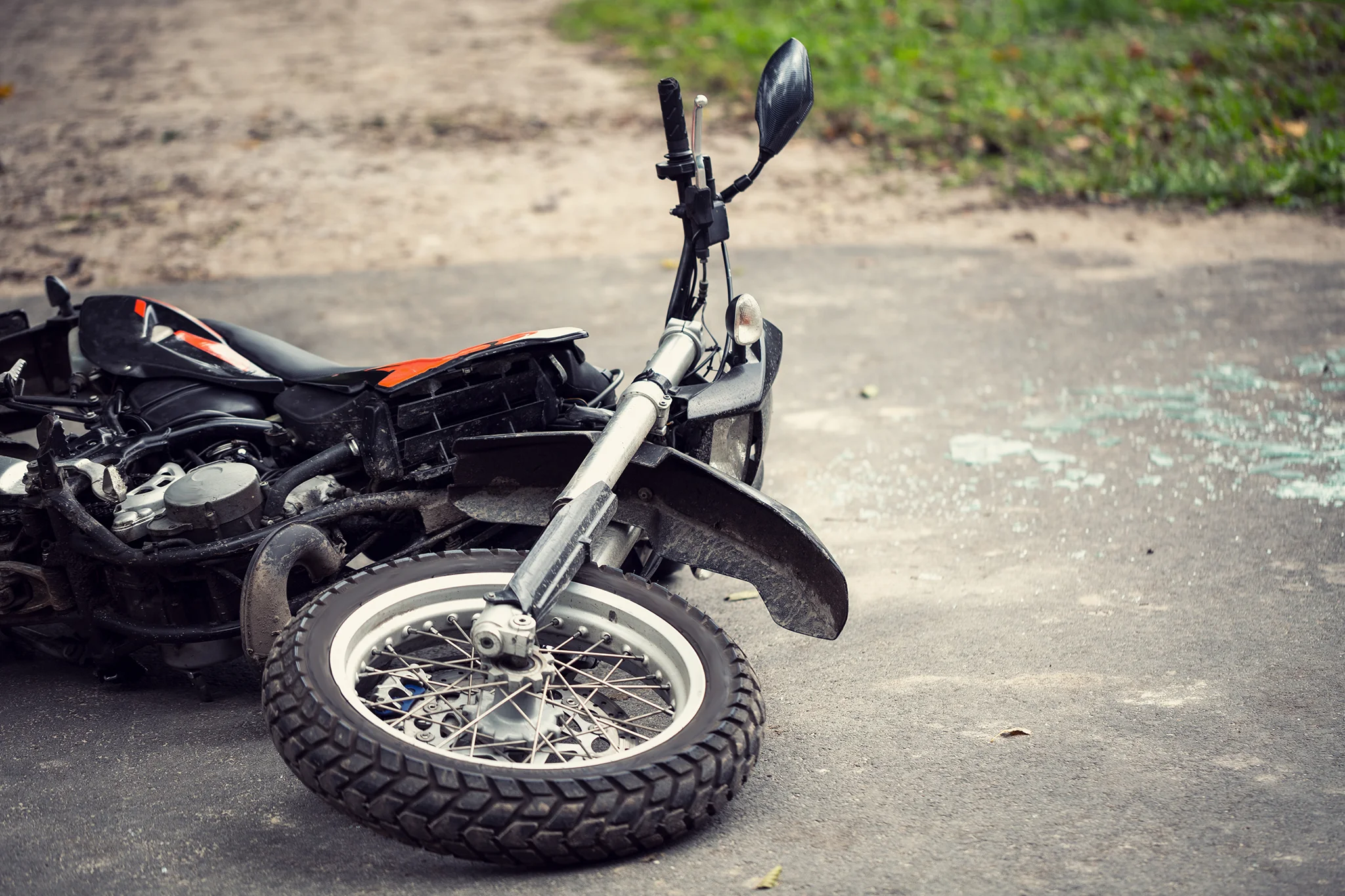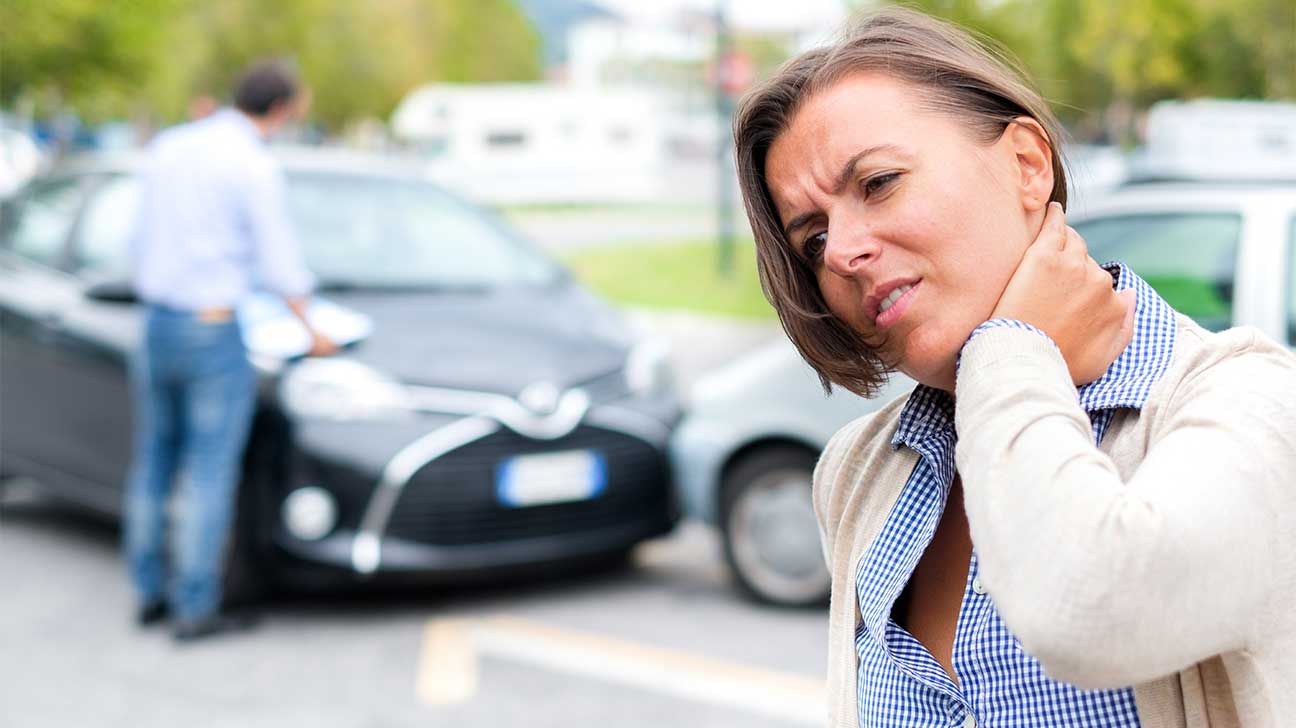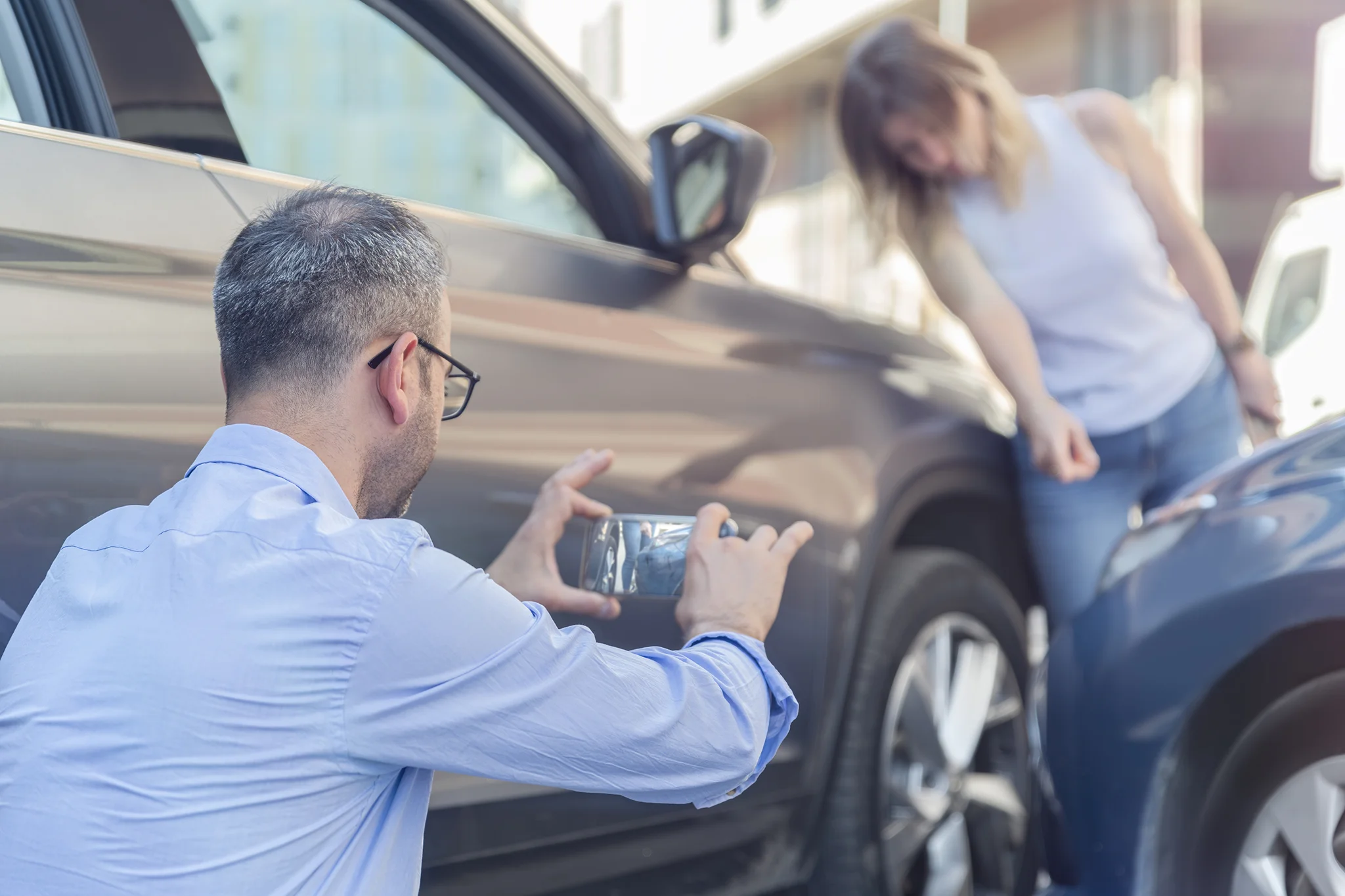Exciting Developments at Gildeas: Five Changes To Our Business
At Gildeas Solicitors, we believe that continuous improvement is key to providing our clients with the highest standard of service. In line with this commitment, we are pleased to discuss a series of significant changes we’ve taken at our firm, aimed at modernising our operations and enhancing your experience with us.
Introduction of a change management framework to review performance
At the beginning of our change management project, we decided upon several goals; to improve the customer experience, reduce lifecycles, improve our claims practices and increase efficiencies. To do this, we set about updating our best practice guidance and modernising our claims management system to meet the requirements of the business.
To further improve our operations, we’ve introduced a robust change management framework. This will allow us to systematically review our performance and implement improvements where necessary. By fostering a culture of reflection and adaptability, we aim to ensure that our processes remain effective and aligned with our strategic goals.
Implementation of multiple systems driven innovations to streamline our approach to claims
Using access to increased levels of data, we were able to identify areas of the business that were working well and implement those practices across other departments.
We developed bespoke system solutions which integrate and improve all Management Information (MI) and Key Performance Indicators (KPIs) optimising our claims process to align with our strategic objectives.
We were also able to pinpoint areas of the business that required modernisation and set about implementing improvements which have had a positive effect on the customer experience and journey. By aligning our procedures with our overarching goals, we can deliver a more consistent and transparent experience.
Modernisation of our claims management procedures to align with our goals
We introduced improvements to our claims management system which have had a positive impact across accounting, claims, and management processes.
Our focus on improving our claim management system and reporting has allowed us to leverage data-driven insights, ensuring that we remain responsive to our client’s needs.
Complete overhaul of office and home-based IT hardware systems
We’ve undertaken a comprehensive upgrade of our office and home-based IT hardware systems, including new laptops, phone systems, and software. These adaptations have included a whole-system migration, and significant changes to our infrastructure. We continue to develop our client-facing operations, with development underway on our websites, branding, and social media.
This overhaul not only ensures that our team has access to the latest technology but also enhances our ability to manage claims efficiently and securely. By investing in state-of-the-art IT infrastructure, we’re better equipped to respond to our client’s needs and adapt to the fast-paced legal landscape.
Ongoing review of our best practice to improve the customer journey
Finally, we are committed to the ongoing review of our best practices to continuously improve the client journey. We understand that the legal process can be daunting, and we aim to make it as seamless as possible. By regularly assessing and refining our practices, we ensure that every interaction with our firm is positive and productive.
Our Director, Lindsay Hare and Senior Claims Manager, Danny Thomson have been leading on the project. Of the developments, Danny said:
“The project has been running for 18 months. We are delighted with the improvements that we have implemented so far, and we are excited about the next stages of the development which we are confident will continue to help the business improve.”
Conclusion
These changes mark a significant step forward for Gildeas, reflecting our unwavering commitment to enhancing service delivery and meeting the evolving needs of our clients. As we continue to implement these innovations, we are confident that they will lead to a more efficient, transparent, and satisfying experience for everyone who engages with our firm.
We invite you to stay connected with us as we navigate this exciting journey. Whether you’re a current client or considering our services, we welcome your feedback and are eager to assist you with your legal needs. Explore our website for more information on how these advancements can benefit you, and don’t hesitate to reach out to us with any questions or to discuss how we can support you.
Gildeas Solicitors is a recognised law firm specialising in personal injury claims, supporting you throughout Scotland from our offices in Glasgow and Edinburgh. We’re passionate about what we do, whilst putting our clients’ interests first. That’s why we make personal injury personal.
Children and contributory negligence

Introduction
Although liability in children’s road traffic accident claims is often easy to establish, the issue of contributory negligence can still arise.
Contributory Negligence
Contributory negligence means that any damages awarded to the claimant are reduced by an amount the court considers "just and equitable," reflecting the pursuer’s share of the responsibility for the damage (s1(1) of the Law Reform (Contributory Negligence) Act 1945). The defender must prove that contributory negligence applies. Decisions are based on the specific facts and circumstances of each case.
Running into the Road
The law typically applies an objective standard of care, but age is a notable exception. Children are not expected to exercise the same level of care as adults, and their age is considered when assessing contributory negligence.
Jackson v Murray [2015] UKSC 5
In this case, a 13-year-old girl was struck by a car after emerging from behind her school bus and running into the road. The driver, traveling at about 50mph in poor light, did not slow down despite the presence of the school bus. Initially, the girl was found 90% liable for the accident due to her recklessness. On appeal, her contributory negligence was reduced to 70%, considering her age and the difficulty of assessing the car's speed in poor light. The Supreme Court further reduced it to 50%, acknowledging the complexities of crossing a major road at dusk for a child.
Child Seats
Section 15 of the Road Traffic Act 1988 mandates that drivers ensure children under 14 are properly restrained. Specific regulations require children under 12 or below 1.35 meters in height to use appropriate child seats. If a child's injuries could have been avoided with proper seating, the driver may be deemed partially responsible. However, Scottish courts have yet to provide clear guidance on this issue, so we look to English cases for insight.
J v Wilkins [2000] EWCA Civ 3024
A mother placed her two-year-old child on her lap with an adult seatbelt, which contributed to the severity of the child's injuries in a collision. Despite the mother's limited understanding of the risk, the court applied a 25% reduction in contributory negligence based on expert evidence.
Hughes v Williams [2012] EWHC 1078 (QB)
In this case, a child was injured while seated on a booster cushion not meeting safety criteria. Experts testified that proper use of a five-point harness seat would have minimised the injuries. The court determined a 25% contributory negligence, as proper restraint would have largely avoided the injuries.
Conclusion
To conclude, contributory negligence is a common argument used by defenders and neither children nor their parents are immune to such arguments being successfully made.
While children are not judged by the same standards as adults, the standard of care expected will be measured by what can reasonably be expected of a child of the same age, intelligence, and experience. As such, their age will be a highly relevant factor when deciding whether contributory negligence should be applied and at what percentage.
On the other hand, no leniency can be expected when a parent fails to safeguard their child. While the Scottish courts are yet to set clear guidance on contributory negligence in such cases, some guidance can be obtained from England where contributory negligence has been applied at 25% in cases where a child is not seated in the appropriate child seat. However, the assessment of contributory negligence is nevertheless highly fact-sensitive with each case being considered on its own.
Written by Stella Kankaanpaa
Vulnerable Road Users and Liability
Written by Zoe Adamson
As part of the Bike Team, I handle personal injury claims for cyclists and motorcyclists, who are at greater risk on the road than drivers. The Highway Code emphasises their vulnerability, instructing other road users to exercise extra caution around them. However, case law indicates that cyclists and motorcyclists are not automatically favoured in accidents and must follow the same rules as everyone else.
The Highway Code
The Highway Code includes several rules to protect cyclists and motorcyclists:
Rule 160: Road users should be especially aware of cyclists and motorcyclists, as they might filter through traffic.
Rule 211: Cyclists and motorcyclists are often hard to see, especially when coming from behind, out of junctions, or filtering through traffic. Road users should look out for them, particularly when turning right across a line of slow-moving or stationary traffic.
Rule 212: Road users should give cyclists and motorcyclists plenty of space to pull out, turn right, or change direction.
Rule 213: Cyclists and motorcyclists might need to change direction suddenly to avoid road hazards like uneven surfaces, drain covers, or oily patches. Other road users should give them ample space.
These rules highlight the dangers cyclists and motorcyclists face and establish their right to filter through traffic. However, those who are filtering must also be aware of the risks involved and take care to avoid accidents.
Key Cases
Powell v Moody 1966
In this case, the motorcyclist (Plaintiff) was riding along a road with two lanes of stationary traffic. He tried to pass the traffic by riding on the right side (offside). A car driver (Defendant) was trying to turn right out of a side road and collided with the motorcyclist. The driver had been allowed to turn by another driver who left a gap in the traffic.
The court decided that both the motorcyclist and the car driver were at fault for not paying enough attention. However, the motorcyclist was found to be more at fault because riding on the right side of stationary traffic is especially dangerous. Additionally, the court felt the speed of the manoeuvre was too high. The responsibility for the accident was divided: 80% to the motorcyclist and 20% to the car driver. This decision was upheld on appeal.
Jason Moffat v Zenith Insurance Plc 2018
In this case, the cyclist (Pursuer) was riding at the speed limit of 30 mph on a street in Edinburgh. He tried to pass a car (Defender) on the left side (nearside). The car driver had signalled and checked mirrors before turning left, but still collided with the cyclist. The cyclist claimed he did not see the signal.
The court decided that the car driver had done everything reasonably expected to ensure safety, such as signalling and checking mirrors. The cyclist was found entirely at fault for the accident. The ruling emphasised that there should not be a general assumption that cyclists are always favoured in traffic accidents with cars. This decision might be different now due to updates in traffic rules after the case.
Conclusion
The Highway Code is designed to protect all road users, especially the most vulnerable like cyclists and motorcyclists. It permits filtering and instructs other road users to be cautious around cyclists and motorcyclists. However, the vulnerability of these road users does not mean they are less responsible for accidents. They are expected to follow the same rules as other road users. When handling bike cases, we cannot assume that the other party is always at fault simply because cyclists and motorcyclists are more exposed. Each case must be evaluated based on its specific circumstances to determine liability fairly.
Gildeas Solicitors is a recognised law firm specialising in personal injury claims, supporting you throughout Scotland from our offices in Glasgow and Edinburgh. We’re passionate about what we do, whilst putting our clients’ interests first. That’s why we make personal injury personal.
Considering our services? Call our dedicated team today on 0141 331 6070.
Understanding Whiplash: Pursuing compensation for injury claims.
Written by Michaela Christie
Introduction – causes and symptoms
Whiplash refers to various neck and spinal injuries primarily caused by road traffic accidents but can also occur due to slipping, tripping, or any abrupt jolting of the neck or upper spine. The severity of whiplash ranges from mild stiffness and discomfort to severe symptoms like headaches, disrupted sleep, and even permanent disabilities. Recovery typically occurs within 2-8 weeks for minor cases but can take several months for more serious injuries. Compensation claims are higher for those with severe symptoms or emotional distress such as anxiety or depression, which may indicate chronic whiplash. Assessing damages for such cases can be contentious.
Presenting the evidence
As with any claim for personal injury, there is generally an expectation to provide sufficient evidence. For a person to be able to prove that they have suffered a whiplash injury, they will be required to attend a medical appointment whereby an independent medical expert will ascertain the symptoms which they have suffered due to the accident. Similarly, the affected party may also visit the hospital or their GP.
Obtaining the medical records of a pursuer may also serve as supportive of their case where an injury can be corroborated. However, whiplash injuries can often take a few hours or up to a few days to become noticeable, therefore clients do not always seek immediate treatment from a GP or hospital. As such, it is common for many people to have opted to treat themselves post-accident with over-the-counter pain relief to alleviate their discomfort. Nonetheless, adequate medical evidence is regarded as a necessity in verifying the severity of the injury sustained.
Securing whiplash compensation
Negotiating a settlement figure with a defender outside of court can become quite challenging. As such, certain key factors must be taken into consideration. In addition to injury, where a loss of earnings, car and repairs costs have been incurred, it is unreasonable to provide a statement of valuation of claim to a defender without prior thorough investigation. Similarly, once the appropriate level of initial evidence has been ingathered, only then can a solicitor or claims handler advise a client on the expected outcome of compensation which they can expect to receive for their injuries.
Given every claim is different, there is no one size fits all valuation available due simply to the nature of the injuries which the pursuer may have sustained. For example, a client might have suffered an exacerbation of a serious injury previously obtained in a past and unrelated accident. Accordingly, due to the present accident an underlying asymptomatic injury may have subsequently become symptomatic. This in turn, has then caused a negative consequential impact on the daily life of the pursuer. Circumstances such as these will often alter the value of a claim. Moreover, disclosing the appropriate requested evidence subsequently enables the defenders to put forward their offer to the pursuer with the intention of settling the matter efficiently.
Conclusion
In negotiating a settlement for whiplash compensation, several factors are crucial. The severity of the injury and its impact on the claimant's life are significant considerations. When a claim reaches court, the central question is whether, how would you have been but for the other person’s negligence. What would you not have had to pay for? If you have lost income what would you have been paid? Finally, how would you have been physically and mentally had the accident not happened? Successful settlements often occur when all necessary evidence is gathered and disclosed, prompting offers from the other party. Determining the compensation amount requires thorough examination of medical evidence.
https://gildeas.net/contact/
What is an Occupier's Liability Claim?
Written by Ciara Roche
If you are injured in a public place which is owned or rented not by a public body, then you may be entitled to claim under the Occupiers Liability (Scotland) Act 1960. This Act sets out the circumstances where a person who occupied an area of land can be held liable for the injury, property damage or death to a visitor on their land.
This type of claim can apply to a stretch of occupied land or other premises, including a fixed or moveable structure, which includes any vehicle, vessel or aircraft.
What duty of care is owed by the occupier?
It is useful to note the statutory provisions which underpin occupiers’ liability. The Occupiers Liability (Scotland) Act 1960 section 1(1) explains that this act determines the care which a person who occupies or has control over land or premises is required to provide to any person entering the premises, in regards to any dangers on the premises or anything which is omitted to be done in respect of these dangers.
Section 2 of the act tells us that this care is required except where the occupier is entitled to, and does, extend, restrict, modify or exclude these obligations by agreement towards a person, where it ‘is reasonable to see that that person will not suffer injury or damage by reason of any such danger.’ In essence, the occupier owes a duty of care where it is reasonably foreseeable that harm would be caused to a visitor as a result of the occupier’s act or failure to act.
What do I need to prove in order to make a successful occupiers liability claim?
The essential factor that requires to be proved in order to make a successful occupiers liability claim is that the occupier was aware, or reasonably should have been aware, of the danger on their premises and that they did not take the reasonable steps to prevent harm or injury.
It is not enough for a pursuer to say that there was a danger on the premises and as result they suffered injury or damage.
There are also a number of other factors which will be relevant to a court in an occupiers’ liability case, these include:
- The nature of the danger;
- The extent of the injury or damage suffered by the pursuer;
- The probability of injury or harm;
- The age of the pursuer;
- Whether the pursuer was permitted on the premises.
As with any legal case, there are a number of defences which a defender may seek to make. The most notable are the defence of contributory negligence, meaning that the pursuer is partly at fault for their accident, and the defence of volenti non fit injuria, in other words the pursuer accepted the risk of injury. If a successful defence of contributory negligence is pled, then any damages awarded to the pursuer shall be reduced. If the defence of volenti non fit injuria is successfully pled, the occupiers’ liability claim as a whole may be unsuccessful.
Gildeas Solicitors is a recognised law firm specialising in personal injury claims, supporting you throughout Scotland from our offices in Glasgow and Edinburgh. We’re passionate about what we do, whilst putting our clients’ interests first. That’s why we make personal injury personal.
Considering our services? Call our dedicated team today on 0141 331 6070.
The Significance of Evidence in Personal Injury Claims
Written by Michaela Christie
Introduction
The success of a personal injury claim heavily relies on the quality and strength of the evidence presented. It is not merely about conveying a persuasive argument but ensuring it aligns with tangible proof, substantiating the claimant's position. This blog explores the critical role of evidence in personal injury claims and emphasises its impact on establishing liability, obtaining necessary proof, utilising expert opinions, incorporating witness testimonies, and addressing the consequences of weak evidence.
Establishing Liability
If the Pursuer has trouble proving that the Defender is responsible for their injuries it is vital to ensure that whilst seeking reparation, their solicitor exhausts every avenue available to them whilst ingathering the evidence. As such, this may include obtaining medical records, expert reports, witness statements, photographs, dashcam footage, police precognitions and/or police reports etc which are subsequently acknowledged as corroborative. Expert opinions can be deemed necessary to establish liability and in assessing the extent of a Pursuer’s injuries, some of which may include those provided by medical experts within a specified field and specialists in accident reconstruction etc. Liability is also established by proving that the harm suffered has been directly caused by the accident. This harm sustained may include but not limited to - physical injury, psychological injury, emotional distress and financial loss.
Obtaining the Evidence
Initial documentation of the accident scene is imperative, with clients encouraged to capture photographs and measurements. Law firms routinely request medical records to verify post-accident GP or hospital visits, providing essential proof of the severity of injuries. This also aids in uncovering any pre-existing conditions undisclosed by the claimant, ensuring transparency in the claims process.
Expert Evidence
Referring to the case of Kennedy v Cordia (Services) LLP [2016] UKSC 6, the importance of expert evidence is underscored. Independent medical experts play a crucial role in assessing injuries and their impact, even in cases of seemingly minor incidents. Adhering to the Scottish Pre-Action Protocol timelines ensures a smooth progression of personal injury claims, especially in significant accidents involving insurance companies.
The Role of Witnesses
Credible witnesses significantly contribute to building a robust case. Collecting contact details promptly and securing supportive statements from witnesses is vital. The urgency in gathering witness evidence stems from the natural deterioration of recollections over time. The Anderson v Jas B Fraser & Co Ltd 1992 S.L.T 1129 case highlights the competence of witness statements obtained during precognition in supporting a claim.
Disadvantages of Weak Evidence
Claims supported by indisputable evidence are more likely to secure successful outcomes. Conversely, weak or insufficient evidence may lead to contention, resulting in reduced settlement offers or unsuccessful claims. The clear establishment of the link between the accident and injury is crucial to avoid complications and additional costs associated with updated reports.
Conclusion
Compelling evidence is essential when establishing liability. This provides justification as to who was at fault for an accident and forms the basis of any victorious personal injury case.
Concrete evidence enables Defenders and/or the courts to measure the severity and impact of the harm sustained by the Pursuer. Furthermore, the strength of the evidence can positively influence negotiations and encourage the other side to settle the claim for a much greater monetary value.
Gildeas Solicitors is a recognised law firm specialising in personal injury claims, supporting you throughout Scotland from our offices in Glasgow and Edinburgh. We’re passionate about what we do, whilst putting our clients’ interests first. That’s why we make personal injury personal.
Considering our services? Call our dedicated team today on 0141 331 6070.
How to secure compensation against untraced or uninsured drivers
What is the Motor Insurer’s Bureau (MIB)?
The Motor Insurers Bureau (MIB) is an organisation that exists to compensate innocent victims of road traffic accidents who have been injured or had their property damaged by an uninsured or untraced driver. The MIB is a non-profit organisation that is funded by the insurance premiums of UK drivers and is intended to be a “fund of last resort”. Therefore, if any other policy of insurance covers the claim or any part of it, it must be directed to the relevant insurer.
In short, this means that if you have been injured in an accident caused by an uninsured driver or untraced (i.e. a “hit and run” type situation) you will still be able to claim compensation for your pain, suffering and other financial losses.
When dealing with the MIB, it is always better to consult with a personal injury solicitor in order to get the correct guidance and maximise the level of compensation awarded, particularly as the MIB have their own policies and procedures which must be adhered to in order for the claim to be successful.
What do the MIB do?
The MIB carry out a number of schemes:
- Claims against untraced drivers
- Claims against uninsured drivers
- Claims against a foreign registered vehicle
- Claims from an accident abroad
What can be claimed for through the MIB?
- Personal Injury
- Vehicle damage
- Property damage
- Wrongful death
- Uninsured loss (e.g loss of earnings/ policy excess)
Making a claim against an uninsured driver
It is illegal to drive a vehicle in the UK without being insured and could result in a £300 fixed penalty notice and 6 points on your license. In more serious cases, it could result in prosecution and/ or a complete driving ban. Despite this, many people knowingly drive without valid insurance and it can cause serious issues for people who are involved in an accident with them. The MIB reported in December 2023 that every 20 minutes someone in the UK is hit by an uninsured or hit-and-run driver and, tragically, each day at least once person suffers such severe injuries that they require lifelong care. According to the figures published by the MIB last year, uninsured driving increases the annual premium for each UK driver by approximately £53 per year.
Uninsured Drivers’ Agreement
Claims involving uninsured drivers are governed by the 2015 Uninsured Drivers’ Agreement which applies to any accidents occurring on or after 1 August 2015. In situations where no insurer can be traced, the MIB will effectively step in and take their place.
Making a claim against an untraced/ Hit-and-Run driver
In Scotland, if you are a victim of a hit and run accident, you may be eligible for compensation through the MIB. To make a claim, you must meet certain criteria, for instance, you must have reported the incident to the police within a specified time frame, usually 14 days, and provide the MIB with all of the necessary information and evidence to investigate the claim. It would also be useful to make your own investigations and ingather as much evidence as possible before submitting the claim, for instance, requesting CCTV and dash cam footage from the locus. This can make it easier for the Police to trace the third party driver/ vehicle.
What will the compensation cover?
The compensation can cover a range of damages, such as medical expenses, property damage, loss of earnings and pain and suffering. The amount of compensation which you will receive will depend on the circumstances of the accident and the extent of your injuries.
Untraced Drivers’ Agreement
Untraced claims are dealt with through the 2017 Untraced Drivers’ Agreement and applies to all accidents occurring after 1 March 2017.
Typical scenarios
- Driver may think that it was a minor accident and fail to stop at the scene.
- In some cases, people drive off unintentionally without realising they have been involved in an accident, e.g. larger vehicles such as HGVs.
- A pedestrian may be struck by a vehicle and the driver may leave the scene without checking if the person is ok.
- A vehicle may have been cloned.
- False or incorrect details may be exchanged at the scene.
Written by Kyanna White
Gildeas Solicitors is a recognised law firm specialising in personal injury claims, supporting you throughout Scotland from our offices in Glasgow and Edinburgh. We’re passionate about what we do, whilst putting our clients’ interests first. That’s why we make personal injury personal.
Considering our services? Call our dedicated team today on 0141 331 6070.





